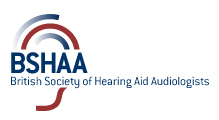
15th February 2015
The Noise Reduction feature in Hearing Aids, What Can You expect
Noise Reduction, Adding Comfort To Listening in Noisy Situations
The most biggest effect of noise for people with hearing loss, is its impact on their ability to understand conversation. Its biggest impact is the daily interference with their ability to communicate every time they talk to somebody in a noisy situation. The nature of the background noise is incidental, it may be considered desirable such as music, or undesirable, such as the traffic noise or a noisy crowd. People wearing hearing aids should be able to communicate in every sound situation that a normal hearing person can. In order to deliver this ability hearing aid manufacturers have designed a number of hearing aid features that work in different ways to improve speech perception in the presence of competing sounds.
Noise Reduction in Modern Hearing Aids
Most modern hearing aids of every technology level have some form of noise reduction or noise management feature. Noise Management or Reduction is designed to help a hearing aid user in noisy situations by attempting to lower the volume of unwanted noise. The feature generally works on an automatic basis turning itself on, off or down and up as the situation demands. Generally the feature changes how it is working as a situation becomes quiet or if you need to hear because there is a speech signal present. It is a smart feature which makes subtle changes in the output of the aid so that you don't have to.
How Noise Reduction works
Most modern noise reduction systems are modulation based systems, modulation-based Noise Reduction analyses the overall sound environment and the presence of sounds that change in level over time (such as speech). Speech under analysis appears with very different characteristics than noise. This difference is what allows the system to make decisions on what is speech and what is noise. If the noise is loud enough, and no strong speech signal is detected, then the noise reduction will reduce the overall level of output of the hearing aid to prevent the sound becoming uncomfortable. If speech is detected, then the level will be turned back up to ensure audibility of these important and desireable sounds. These adjustments can be done in different frequency bands, this allows the system to turn down frequencies where noise is the dominant sound, while amplifying the frequencies that are useful and important for speech understanding.
In the ideal noise reduction system, the hearing aid will only reduce the undesired noise while leaving speech signals completely intact. In this ideal scenario, the hearing aid will understand what sounds it is expected to pass on to the listener and what sounds it should reject. It will then be able to instantaneously remove or clean the unwanted sound signal. In order to reach this goal, the focus has been on the acoustic differences between speech and noise. Noise can vary in an almost infinite number of ways, however the nature of speech is constant in its overall structure. We are most definitely not there yet, but as processor speeds in hearing aids continue to improve and battery capacity increases, there is hope that this type of system will become available.
Attacking Noise in Different Channels
In most modern hearing aids the noise reduction feature is constantly at work identifying what is happening in the surrounding sound environment, when it hears noise, the hearing aid automatically turns itself down. The amount of gain (amplification) reduction usually depends upon how much noise there is. The more noise there is present, the greater the reduction in gain. While this gain reduction reduces the amplification of the competing noises, it can also decrease the energy in the speech signals. In other words, noise reduction can affect both speech and noise in exactly the same way.
This is where splitting the amplification into multiple channels or bands (depending on Manufacturer) helps, modern hearing aids are multi-channel or band devices. Most noise reduction features will work seperately within each separate frequency channel, it is therefore possible to reduce the amplification in the noisiest channels only, in an effort to avoid the channels that are carrying important speech information. In a channel where noise and speech are competing, normally the noise reduction system would be programmed to leave well enough alone.
How Much Reduction
The amount of gain reduction depends upon a number of factors, not just in the sound situation but also on the hearing aid manufacturer. Different manufacturers use different systems and their own decision and management rules. Whilst most are governed by how much noise there is, other factors, such as the overall levels of the speech and noise, are also considered. It is a common practice to vary the amount of gain reduction depending upon a band's frequency location in sound, lower frequencies are most related to noise and therefore may be given more attention. Frequencies more important for the understanding speech are not reduced as much as frequency bands less important for the understanding of speech.
All The Same?
Noise reduction systems are most definitely not all alike, the different manufacturers features vary in effectiveness and the amount of gain reduction applied, even at the same sound frequencies. They also may differ in how rapidly they increase and decrease the gain (called attack and release times) and how they affect different types of sound. It has been an accepted in the hearing aid world for many years that noise reduction does not actually affect signal to noise ratio. In other words, noise reduction will improve comfort in noise but does not affect or increase speech clarity.
Improving Speech Clarity, Maybe Not?
Except for Widex, a Danish hearing aid manufacturer who have presented a paper on their Speech Enhancer feature that actually shows an affect on signal to noise ratio from their noise reduction feature. Overall though, most hearing aid manufacturers admit that their noise reduction has no affect on speech clarity. The Speech Enhancer feature in Widex hearing aids has been shown to affect signal to noise ratio between 2 and 6 db dependent on the noise source. Even though it is accepted that most noise reduction features just reduce noise, users do prefer listening in a noisy situation while wearing a hearing aid that includes noise reduction.
Much Better To Have It
Hearing aid users report that the background noise does appear to recede and that incoming speech does sound better. They also report that the overall listening experience is not quite as stressful or as tiring as it is without noise reduction. However these subjective reports are not backed up during objective testing. When speech perception scores with and without noise reduction are compared, there appears to be no improvement overall in speech perception with noise reduction except in the case of the Widex feature.
It has been speculated by researchers that speech perception scores would demonstrate an improvement after long-term listening with noise reduction. This speculation is based on the fact that with noise reduction in a noisy situation there is less stress or fatigue. More relaxed people do listen better than people who are tired or under stress. While this is purely speculative, it may help to explain why many people wearing such systems report an improvement in their ability to understand speech.






